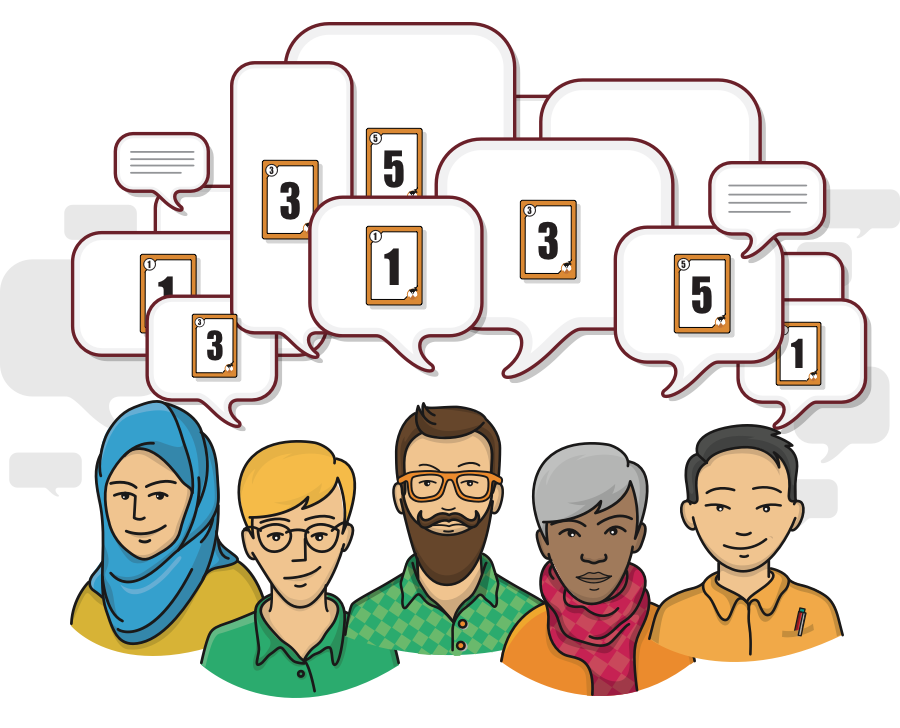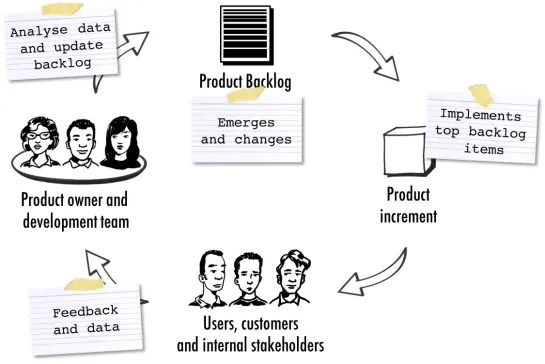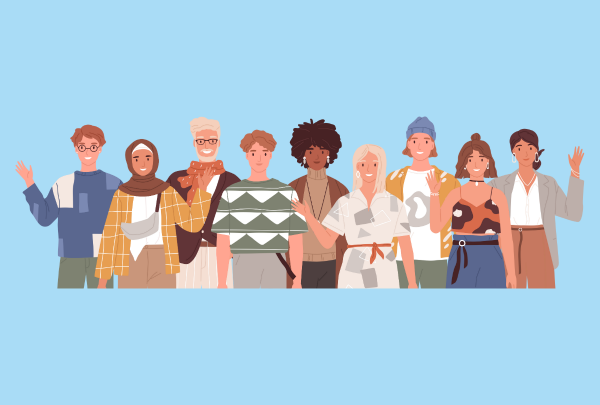Team Backlog Refinement: Unlocking Work Prioritization
By Team Lean Agile Intelligence

Team Backlog Refinement in Agile
Team backlog refinement is a fundamental activity for any agile team. While not an official scrum event, the scrum guide recommends spending up to 10% of the team's time in backlog refinement. The reason for this is simple, backlog refinement sets your sprints up for success by building a shared understanding of the work across the team.
In this post, we discuss the best practices of Team Backlog Refinement. Following the foundational techniques at different stages of your learning journey, you can ensure to learn about the best strategies to bring back to the team. However, Team Backlog Refinement is just one part of the big picture, if you want a holistic view of your team's current process status, take advantage of our free agile assessment for Team Agility.
The Deliverables of a Team Backlog Refinement
There are a few key objectives and deliverables to consider when it comes to Team Backlog Refinement:
-
A whole team understanding of what is needed to build and why. This includes new ideas and enhancements for customers as well as improvements to the application/system itself.
-
Backlog items created and refined by the Product Owner and team that meets the definition of ready or action items to get them closer to the definition of ready.
-
Estimates for the work that will potentially be included in upcoming sprints. A good starting practice is planning poker. Some teams eventually move to probabilistic forecasting. A good way to transition is to use a modified version of planning poker using only three cards: (1, Too Large, No Clue.) In this technique the team continuously refines the item until it’s as small as possible while retaining value, not worrying about minor differences in size. We can then transition to using probabilistic forecasting. You can read more about that in-depth here.

Source - What is Planning Poker?
Designing a Backlog Refinement for Success
It’s a good practice to create a sales pitch that team members will read and want to attend. It’s then up to the facilitator to design and execute a meeting in such a way to live up to the hype! Here is a sample sales pitch you could include in your meeting invite.
-
Backlog refinement attendees will be able to influence what they are building and gain an in-depth understanding of the work and its purpose to set up successful and hopefully painless sprints!
Potential Roles and Responsibilities for your backlog refinement:
-
Team members are responsible for having an understanding of the stories BEFORE coming into refinement.
-
In order to achieve the above statement, the PO is responsible for having prioritized stories to refine and prprovidingnough time for the team to investigate. It’s a good idea to send out a list of the stories for refinement a few business days ahead and ensure everyone bakes in slack time during sprint planning for this work.
-
The Scrum Master is responsible for facilitation and the overall effectiveness of the meeting as well as teaching the dev team how to make the meeting effective through facilitation techniques.

Source - Product Backlog Refinement
Team Backlog Refinement and The Learning Journey
At Lean Agile Intelligence, we recognize Team Backlog Refinement as the team's ability to progressively elaborate backlog items and create a shared understanding of the work. We divided the learning journey into 4 different stages: Developing, Emerging, Adapting, and Optimizing. In the following sections, we will discuss each stage in detail as well as provide practical tips and techniques to help you extend your skills in this area.

Source - Refining The Product Backlog
Developing
Teams that are “developing” an understanding of the value of Team Backlog Refinement and adopting the foundational techniques should focus on the following improvements
-
The What: Ongoing activity that occurs on a cadence
-
The How: It’s important to treat refinement as seriously as other meetings and should be conducted on a scheduled cadence. A recommended start point is every week for 1 hour. Being on a cadence simply means the meeting is happening at the same time each interval. This way team members and external attendees can properly plan and consistently attend.
-
-
The What: Is attended by the right people to progressively elaborate and decompose backlog items (i.e., User Stories)
-
The How: Not only should team members attend but others outside the team who can help the team refine backlog items should be in attendance. Some potential examples: Architects, Business Stakeholders, Shared services, SME’s, or anyone who can add value to the conversation.
-
-
The What: Includes rich conversation, backlog items (i.e., User Stories) writing, decomposition, team-based estimation (i.e., planning poker), design discussion, and progressive elaboration on acceptance criteria.
-
The How: As stated earlier above, sending out a list of items to be refined at least 3 business days before your meeting is a good practice to set up productive and effective refinement sessions. Designing a refinement meeting including the items stated in “The What” above will help drive effectiveness. Don’t be afraid to switch up techniques and processes to improve on the desired outcomes.
-
-
The What: Dependencies are called out and recorded
-
The How: Add dependencies to your Definition of Ready. For a more in-depth reading of this topic see Robert Galen’s post here.
-

Emerging
Teams that are “emerging” beyond the foundational techniques of Team Backlog Refinement and are embracing it as they become more proficient, should focus on the following improvements
-
The What: Surfaces ambiguity, risk, and the need for research spikes
-
The How: A research spike is a type of PBI that is dedicated to reducing uncertainty for refinement, planning, and estimation purposes. An In-depth look at spikes can be found here.
-
-
The What: Backlog item Definition of Ready is established, and Backlog Refinement is geared toward meeting that criteria
-
The How: As a team, discuss what is needed to begin working effectively on backlog items and document agreed-upon standards to work toward during refinement. A good starting point is Bill Wakes “INVEST” which stands for Independent, Negotiable, Valuable, Estimable, Small, and Testable. His original post on the topic can be found here.
-
-
The What: Used as not only a requirement activity but also a planning activity
-
The How: Backlog refinement doesn’t only have to be about work for the next sprint. You can utilize this time to conduct story mapping, discuss upcoming releases, road mapping, or any other planning beyond a single sprint. PBI refinement doesn’t necessarily have to be about what can fit into a single sprint but can be a time to discuss larger initiatives and brainstorm for the future.
-
-
The What: Time boxes are used for the backlog items (i.e., User Stories) refinement to avoid analysis paralysis.
-
The How: A common anti-pattern of ineffective backlog refinement is too long of a discussion on a single item. Sometimes an entire refinement session will consist of discussing only one backlog item. Try dividing the length of the refinement session by the number of items planned to be refined and holding to the timebox. Once the timebox is reached, the team can decide to call it ready or create action items to get it to ready for the next refinement. You can also utilize a consensus technique for extending the timebox but we recommend only for a portion of the original time. If the majority of people agree to continue the discussion, timebox the extension and move on when It’s over.
-
-
The What: Call out risks
-
The How: Discuss the three major types of risk.
-
i. Business Risk: Are we building the right thing?
-
ii. Social Risk: Can the team actually build it?
-
iii. Technical Risk: Will it work on our platform? Will it scale?
-
-
* * * * * *
"Always start with the bigger picture."
* * * * * *
Adapting
Teams that are “adapting” the Team Backlog Refinement practice to extract the full benefit, should focus on the following improvements
-
The What: Refinement of backlog items (i.e., User Stories) continues until it is sufficiently independent to be worked on by the team without excessive coordination.
-
The How: Discuss dependencies, such as potential dependencies on other agile teams, other people in the organization, or third parties outside the company.
-
Instead of simply managing the dependencies try to remove them prior to bringing the items into sprint planning when possible.
-
-
The What: Informal Backlog Refinement activity is naturally occurring amongst team members beyond the formal event.
-
The How: Starting with the daily scrum team members can plan a stay after to discuss an upcoming story for refinement. In addition, team members can impromptu pair on backlog items to refine synchronously in person or if remote via a video call. Another option is asynchronous discussion via instant message.
-

Source - Product Backlog Refinement: How to Succeed as a Scrum Team
Optimizing
Teams “optimizing” the knowledge sharing of the Team Backlog Refinement practice learnings across the enterprise should focus on the following improvements
-
The What: Iterative planning (i.e., sprint planning) meetings are smooth and fast due to the readiness of backlog items (i.e., User Stories) and clarity on purpose and scope.
-
The How: When analyzing your team performance at retrospectives, including refinement as a topic. Ultimately refinement should help to achieve successful sprints. Early on, refinement can help to surface impediments and dependencies that may be out of the team’s control. As the team gets better at refining PBI’s, sprints should objectively improve based on your team’s metrics. Refinement can help combine improving the system around the team and the team itself.
-
* * * * * *
"Instead of simply managing the dependencies try to remove them prior to bringing the items into sprint planning when possible."
* * * * * *
Conclusion
In conclusion, backlog refinement is a critical activity for agile teams, and adopting the foundational techniques can help increase the team's ability to promote accountability and identify areas for improvement. By focusing on the deliverables and potential roles and responsibilities, teams can create a productive and effective refinement process. The backlog refinement process should be continuously improved by following the recommended improvements for developing and emerging teams. If you want to gain a comprehensive understanding of your team’s current process status, we recommend taking advantage of our free agile assessment for Team Agility.